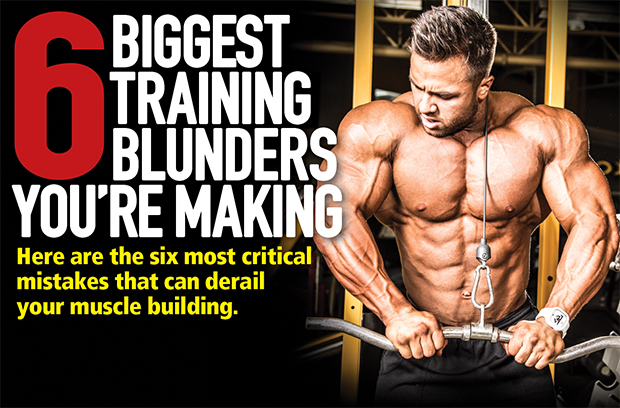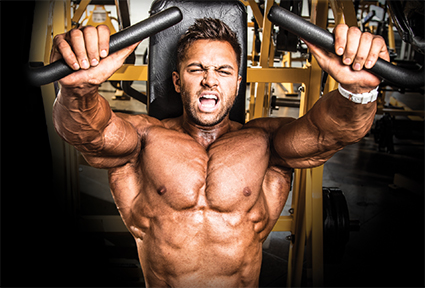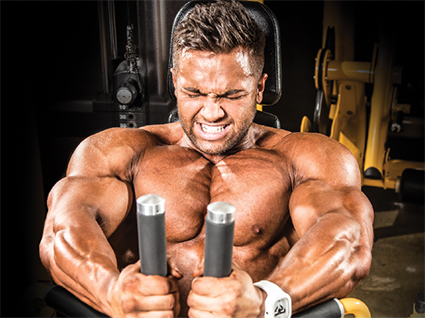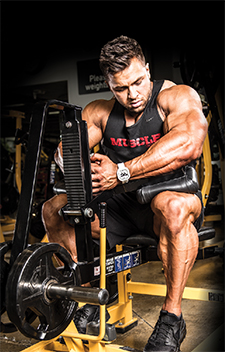6 Biggest Training Mistakes

Everybody makes mistakes, even advanced bodybuilders. Here are the six most critical that can derail your muscle building.
Newbies are often the easiest to spot at a gym because they commonly use bad form on just about every exercise, ranging from a slightly misplaced hand or foot to the get-out-the-video-camera ultra-audacious. But they’re not the only ones making mistakes. In fact, intermediate- and advanced-level lifters also commonly make critical errors in their workouts, too, many of which have absolutely nothing to do with poor form but are still factors slowing down progress. Setting form considerations aside, let’s see if you’re guilty of any of these six highly common bodybuilding mistakes made by lifters of all levels in the gym.
Biggest Beginner Mistakes
1. Being Overly Enthusiastic
Beginners want to see results fast—and that’s why so many make the mistake of trying to cram too much work into their training sessions to make up for lost time. Remember, a journey of a thousand miles begins with a single step, so pacing yourself is essential. Doing endless sets of biceps curls won’t make your arms grow any faster—and may well be counterproductive. It’s a cumulation of good workouts over time that results in growth; what you do today is just a small piece of that.
Enthusiasm is good if you’ve never worked out before when starting a new exercise program, but temper it. You don’t need to spend more than about 60 minutes in the gym to see results, and even as you progress, you’ll never want to do more than about 90—tops.

Besides the increasing onset of fatigue the longer you train, which increases the risk of injury, your body starts producing cortisol, a hormone associated with breaking down of muscle tissue rather than building it up. Beginners may want to do every exercise for every body part, thinking more is better, but that thinking can cripple progress. Expect to hit your body hard for 45 to 60 minutes total, about 30 minutes for a given muscle group. You shouldn’t be able to maintain that kind of intensity very long. And don’t forget: Training is simply the stimulus of the muscle-growth process; actual rebuilding and growth of muscle fibres occurs during your recovery period—a window that can last 24 to 48 hours post-workout—aided by good nutrition and rest.
2. Focusing on Isolation Exercises
While big arms are probably high on your list, your first year of your training should be focused on building your foundation with basic moves such as squats, deadlifts, presses, and rows. Basic compound (also called multi-joint) exercises will help you build muscle all over your body because they take so many muscle groups working in coordination and they allow you to use a much greater load than you can use with isolation (also called single-joint) movements. And that does something very important: It increases endogenous anabolic hormone output (natural growth hormone and testosterone release).

Here’s how to see the difference. With a multi-joint exercise, two or more sets are working in coordination to perform the lift, whereas in a single-joint move, only one set of joints is recruited. Hence, during a bench press, the shoulder and elbow joints are active—and the muscles attached to them contract and stretch accordingly. Compare that to the dumbbell flye or cable crossover, single-joint (shoulder) exercises that better isolate the chest musculature but don’t allow you to use nearly the load.
The linking of multi-joint exercises with greater hormone release is one of the most important lessons you’ll want to remember throughout your lifting career. Sure, they’re harder to do and require more coordination and practice, but the effort pays off big time in the long run.
Biggest Intermediate Mistakes
3. Failing to Learn Variations of a Given Exercise
Even though you may know how to do every exercise in your workout with picture-perfect technique, because of diminishing returns, training your body the same way over and over again eventually leads to a plateau. One easy way to add at least a bit of variety to build thicker, denser muscle is to learn how to do variations of a given movement. That is, if you’re already doing dumbbell lateral raises for your middle delts, also learn how to do the move with cables in front of and behind your back, leaning from a vertical post, one arm at a time, and even seated.
That’s especially useful not only when there’s a line of people in front of you waiting to use a particular piece of equipment but also because it allows you to work the target muscle in a slightly differently manner, which can prompt more compete muscle development.
4. Falling into a Comfort Zone
If your workout isn’t challenging and pushing you, chances are it’s also stopped working. If you just show up at the gym to do your (same old) workout, you’re bound to get the (same old) results. That’s because once a given muscle has adapted to the stress you place on it, you have to increase the threshold to continue to make further gains. That is, if you fail to push yourself harder in some way, don’t expect to see significant changes in your physique. In that sense, your biggest enemy in the gym may be your decision to shift to autopilot.

You need to make changes to your workout at least every six to eight weeks to prevent stagnation. If you’re not getting results, chances are you need to make some kind of alteration, including but not limited to exercises and exercise order, volume (total amount of work done in your session), intensity (defined as how heavy you’re working relative to your single-rep max of a given exercise), rest periods, advanced intensity techniques, and even training frequency as measured by your training split. The added benefit of making such changes to your workouts is that it helps keep you mentally fresh and less likely to get overly comfortable with your routine.
Biggest Advanced Mistakes
5. Not Attacking Your Sticking Points
Once you progress past intermediate status, the fast strength and size gains you achieved earlier become agonizingly slow. While switching up exercises and tinkering with your workout can help, sometimes it’s time to rethink your approach and try some extraordinary methods to jump-start growth processes. Fortunately, plenty of trailblazers have faced similar roadblocks and overcome them.
One strategy that powerlifters and top bodybuilders use is to attack sticking points of their major lifts; that is, the point in the range of motion of a given movement they’re weakest and where a set typically ends. By improving the strength around this spot, you can do more reps and/or use heavier loads.
Here are some techniques that make training harder (never easier!) that specifically target sticking points:
*Reverse movements. By allowing the barbell to momentarily settle on safeties within a power rack, elastic energy is lost, making the movement much harder. *Partial-rep lockouts. Limiting the range of motion of a movement to an area of your strength curve in which you’re much stronger, so you can use heavier weights not limited by your sticking point. *Isometrics. When using a weight in which the muscle contracts as hard as it can but there’s no movement, you can use isometrics to increase strength at specific angles, a proven sticking-point buster.
6. Not Knowing When to Take Your Foot off the Pedal
Once you’re an advanced lifter, you become an expert on sore joints, aches, and pains. Training injuries rarely go away when you’re lifting heavy and intensely day after day. But as you continue to grow, it becomes even more important to pay attention to many of the things you skipped as a beginner, and that includes sufficient warm-up exercises, doing rotator-cuff movements, stretching tight muscles after a workout (especially your low back and hamstrings to help prevent low back pain), understanding the differences between good and bad pain and when to pull back, and monitoring your usage of NSAIDs to treat tendonitis and other joint aches related to repetitive motions.
Listen carefully to your body and see a sports-medicine doctor, physical therapist, or chiropractor when you feel pain, and don’t forget joint supplements to help better lubricate those areas that tend to get irritated. Consider also cycling in periods of low-intensity training to give your joints a pre-planned rest, especially if you’ve been training hard.
Training injuries are a matter of when, not if, and how you deal with one determines how long you’ll be sidelined.

